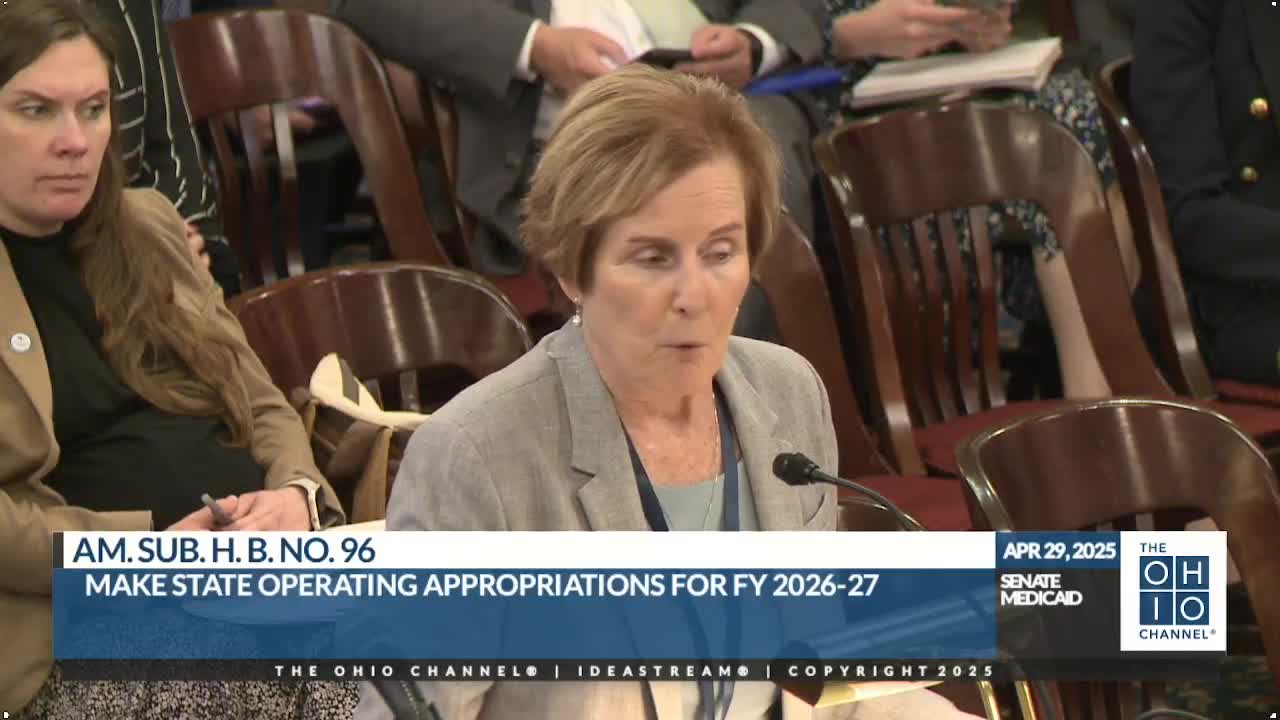Senator Huffman reveals details on rising franchise fees and hospital funding allocation
April 29, 2025 | Medicaid, Senate, Committees, Legislative, Ohio
This article was created by AI summarizing key points discussed. AI makes mistakes, so for full details and context, please refer to the video of the full meeting. Please report any errors so we can fix them. Report an error »

In a recent meeting of the Ohio Senate Medicaid Committee, discussions unfolded under the bright lights of the statehouse, focusing on the complexities of Medicaid rate-setting and the implications of rising franchise fees. The atmosphere was charged with urgency as committee members sought clarity on a multitude of pressing issues that affect healthcare funding in Ohio.
At the heart of the conversation was the challenge of making extensive rate-setting information more accessible to the public. One committee member highlighted the sheer volume of data, noting that while it is publicly available, it is often overwhelming and difficult for the average person to understand. “What do we need to do to make it more digestible for people?” they asked, emphasizing the need for clarity in addressing the specific problems at hand.
Senator Huffman raised concerns about the franchise fee, which is set to increase by 52% in the first year and 15% in the second year. This significant hike prompted questions about the allocation of these funds, particularly where the remaining revenue would be directed beyond the hospitals. The committee was eager to delve deeper into these financial intricacies, seeking transparency and accountability in how taxpayer dollars are spent.
As the meeting progressed, the chairman facilitated the distribution of a hospital package containing crucial documents and spreadsheets intended to clarify the discussions. “It’s an important discussion,” he remarked, underscoring the necessity of understanding the financial landscape of Ohio’s healthcare system. The documents were designed to provide a clearer picture of the policies and financial data that underpin Medicaid funding, with the hope that they would answer lingering questions among committee members.
The meeting encapsulated a pivotal moment in Ohio’s healthcare dialogue, as lawmakers grappled with the complexities of Medicaid funding and the implications of rising costs. As they navigated through the dense information, the committee's commitment to transparency and public understanding remained at the forefront, setting the stage for future discussions that will undoubtedly shape the state's healthcare policies.
At the heart of the conversation was the challenge of making extensive rate-setting information more accessible to the public. One committee member highlighted the sheer volume of data, noting that while it is publicly available, it is often overwhelming and difficult for the average person to understand. “What do we need to do to make it more digestible for people?” they asked, emphasizing the need for clarity in addressing the specific problems at hand.
Senator Huffman raised concerns about the franchise fee, which is set to increase by 52% in the first year and 15% in the second year. This significant hike prompted questions about the allocation of these funds, particularly where the remaining revenue would be directed beyond the hospitals. The committee was eager to delve deeper into these financial intricacies, seeking transparency and accountability in how taxpayer dollars are spent.
As the meeting progressed, the chairman facilitated the distribution of a hospital package containing crucial documents and spreadsheets intended to clarify the discussions. “It’s an important discussion,” he remarked, underscoring the necessity of understanding the financial landscape of Ohio’s healthcare system. The documents were designed to provide a clearer picture of the policies and financial data that underpin Medicaid funding, with the hope that they would answer lingering questions among committee members.
The meeting encapsulated a pivotal moment in Ohio’s healthcare dialogue, as lawmakers grappled with the complexities of Medicaid funding and the implications of rising costs. As they navigated through the dense information, the committee's commitment to transparency and public understanding remained at the forefront, setting the stage for future discussions that will undoubtedly shape the state's healthcare policies.
View full meeting
This article is based on a recent meeting—watch the full video and explore the complete transcript for deeper insights into the discussion.
View full meeting
